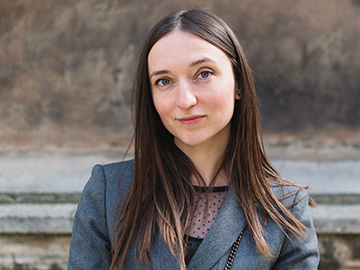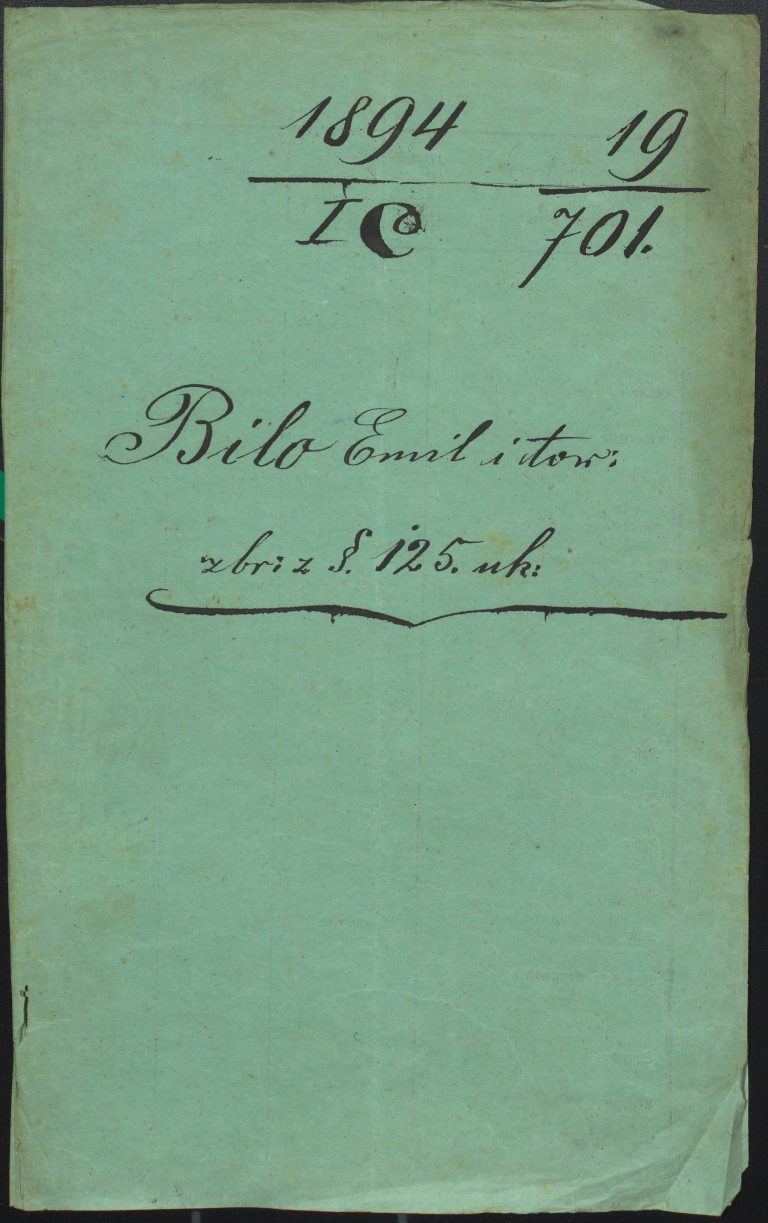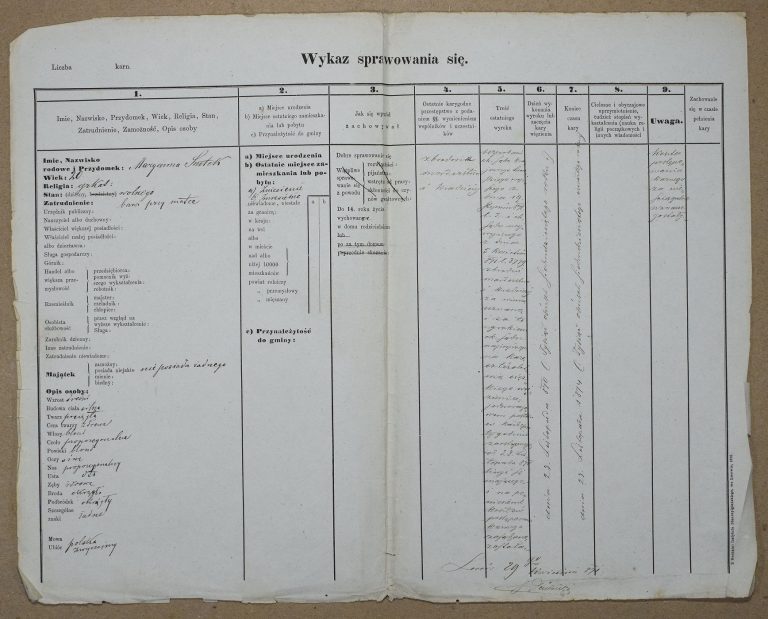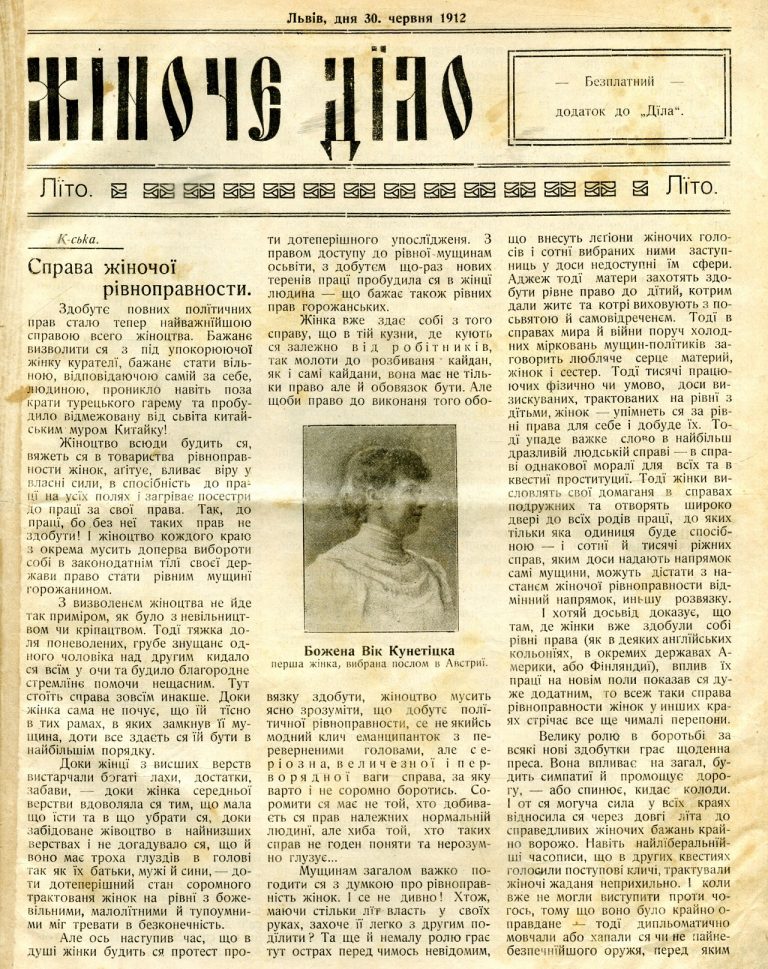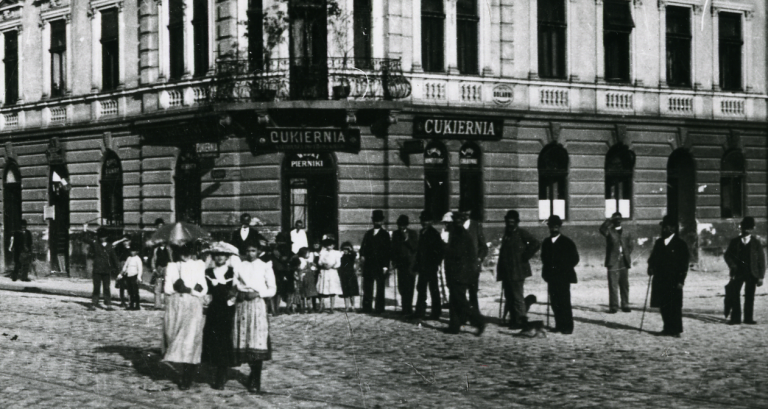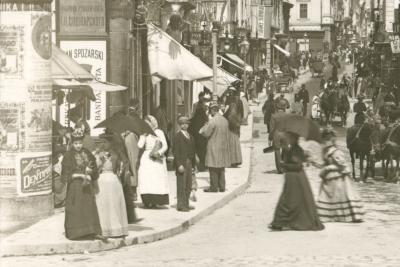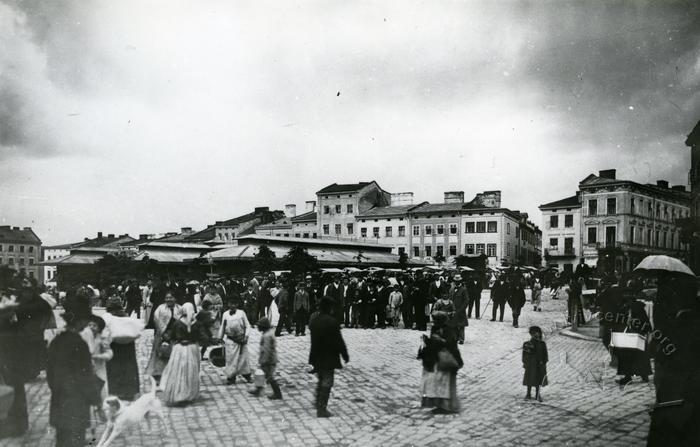Related sources:
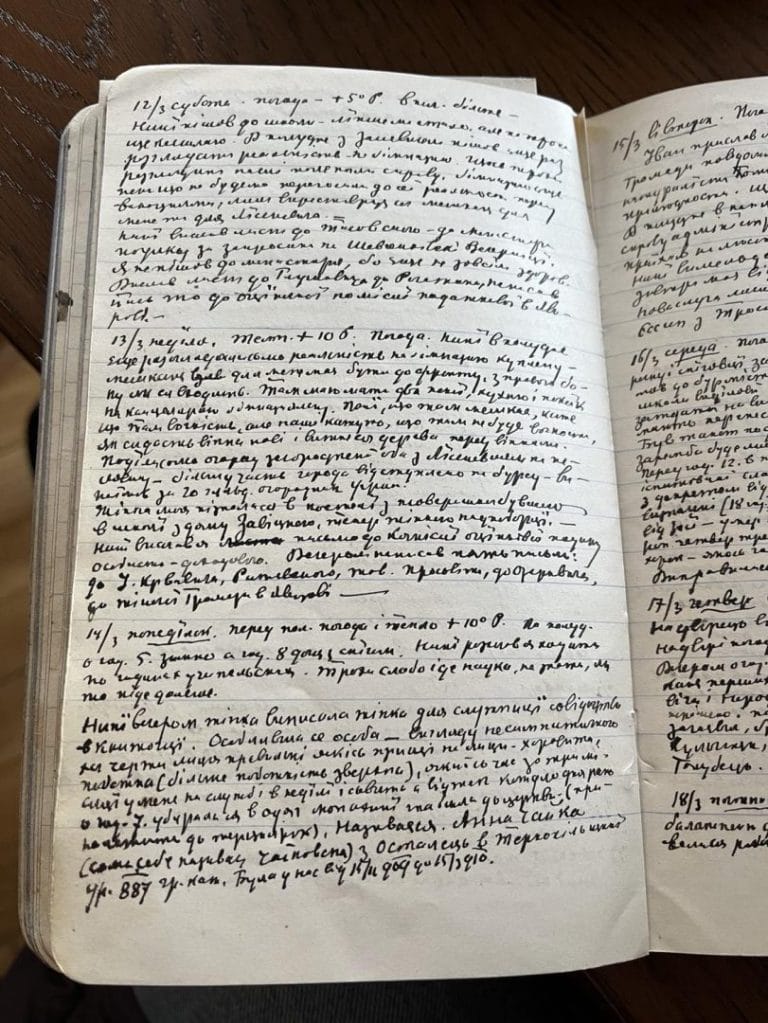
Maria Linchak, from the Story of One Lviv Handmaid (1906-1909)
The 13 notes presented here are a compilation of all the diary entries by Teofil Hrushkevych, a retired Lviv gymnasium teacher, that mention a servant in his household named Maria Linchak (most often referred to as Marynka or Marynia). These references span more than three years, from 1906 to the autumn of 1909, marking the period during which she worked for the Hrushkevych family. Among all the notes the author made about the servants in his household, Maria Linchak is the most frequently mentioned. Alongside her name, we find at least nine other women who worked for the Hrushkevychs before or after Maria, up until the outbreak of World War I. With the...

Letter from Vasyl Stus to PEN International, 11 August 1976
This letter, written by Ukrainian poet, literary critic, human rights activist, and dissident Vasyl Stus, was addressed to PEN International, the global association of writers. Stus penned the letter while serving a sentence in a labor camp in the village of Matrosovo, Tenkivsk District, Magadan Oblast, USSR. He was convicted under Article 62 of the Criminal Code of the Ukrainian SSR (analogous to Article 70 of the Criminal Code of the RSFSR), which charged him with “Anti-Soviet agitation and propaganda.” The letter later became evidence in a new criminal case initiated against Stus in 1980, following his return to Kyiv after completing his initial eight-year sentence. This appeal to the international literary community...
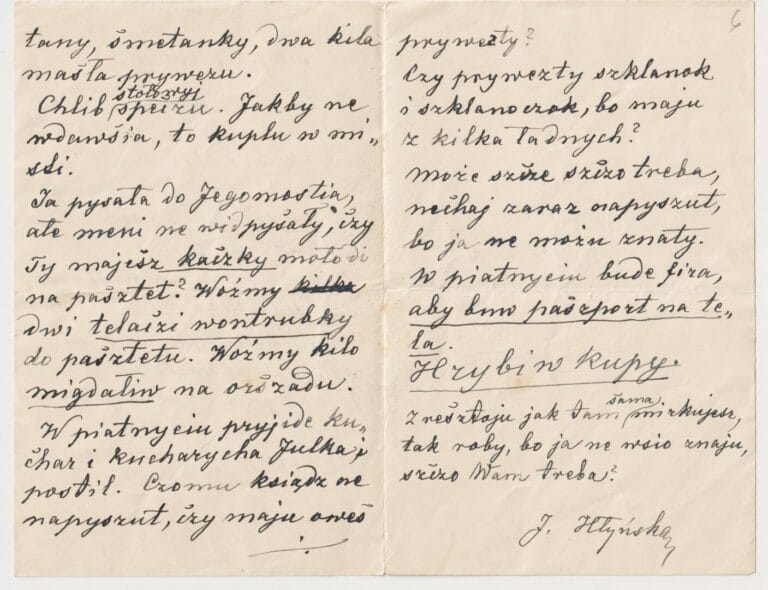
Galician Holiday Cooking in the Letters of the Hlynskyi Family, 1890s-1920s
The letters presented here are from the correspondence of the Hlynskyi family: the Greek Catholic priest Isidor Hlynskyi, his mother Yuliia Hlynska (née Bilynska), and Anastasia Kuzyk, the housekeeper in Isidor's household. They discuss various topics, including the festive menus of church celebrations in the Galician village of Butsniv near Ternopil, where Isidor Hlynskyi served as a priest from 1887 to 1931. The author of the first two letters, dating approximately from 1890 to 1892, is Yuliia Hlynska, the widow of the priest Kuprian Hlynskyi, Isidor's mother, who lived in Cherneliv-Ruskyi. These letters are written in Ukrainian and transcribed in Latin script. The choice of the Latin alphabet was likely influenced by Hlynska's...
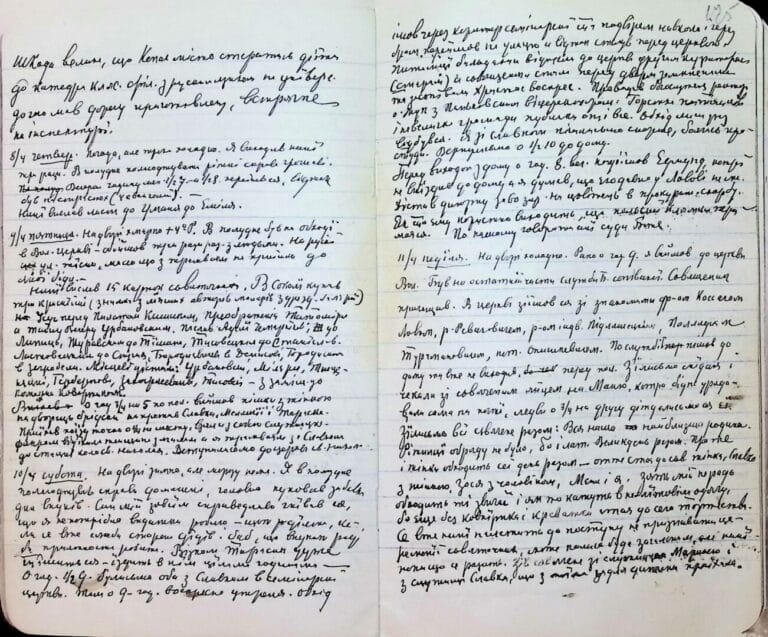
Christmas and Easter in Lemberg in 1908: The Case of One Multidenominational Family
Teofil Hrushkevych a teacher of classical languages at the Second (German) Gymnasium in Lviv, commenced his diary in 1895, though it was only after his retirement in 1906 that his entries became regular. The extant handwritten diary comprises eight notebooks, documenting entries for 1895, 1903, and 1906 (intermittent), and for 1908-1915 (almost daily). Typically, the author penned his notes in the evening, commencing with a depiction of the weather, followed by an account of the day's events: personal matters, such as receiving a pension, settling bills, visiting friends or acquaintances, attending church services, and social engagements, such as participating in meetings of Ukrainian societies to which he belonged, attending the theatre or a...
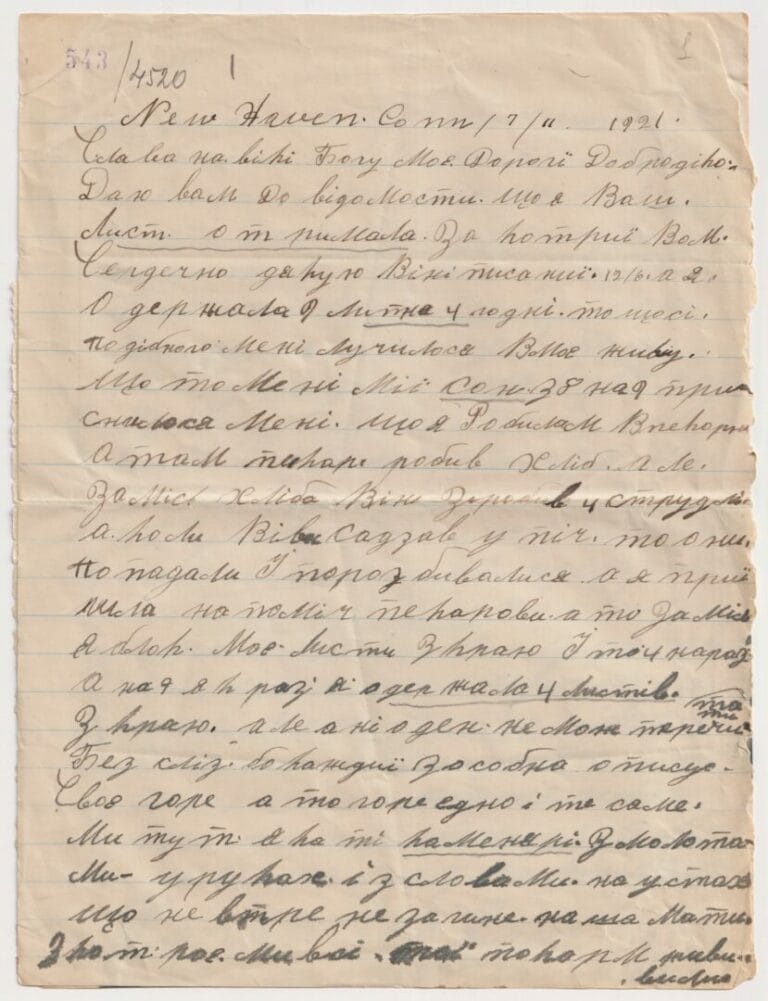
Letter from New Haven to Butsniv, Galicia, 1921
This unattributed letter was addressed to Anastasia Kuzyk, the housekeeper of Isidor Hlynskyi, a Greek Catholic priest from the Galician village of Butsniv, near Ternopil. Penned by a former female resident of Butsniv or one of the neighboring villages who had immigrated to America and resided in New Haven, Connecticut at the time of writing, the letter bears the date of 11 July 1921. It was composed in the aftermath of the recent Ukrainian-Polish conflict and the subsequent Ukrainian defeat. While the letter does not directly mention these events, it cautiously alludes to them, perhaps due to apprehension regarding censorship and potential repercussions for the recipients. The author reflects on her immigrant experience,...

A letter from Olha Barvinska, a teacher at the Lviv school, to her father, 1893
This letter is part of the correspondence between its author, Olha Barvinska (1874-1955), and her father, Oleksandr Barvinskyi, an influential Ukrainian politician. The Barvinsky family lived separately at the time. As an ambassador to the Austrian parliament, Oleksandr was permanently in Vienna while his family lived in Lviv. This letter, among other things, contains an interesting story about Olha's teaching career, which began almost immediately after she graduated from the city women's teacher's seminary. In September 1893, Olha started working as a Ruska (Ukrainian) language teacher at the city's incomplete secondary school. In the letter below, the author describes her invitation to work at the first Ukrainian women's private educational institutions in Lviv,...
Show more
Collapse all
![Image for The Morality of Mrs. Dulska, 2013 TV Movie [Moralność pani Dulskiej]](https://edu.lvivcenter.org/wp-content/uploads/2022/10/moralnosc-pani-768x508.jpg)
The Morality of Mrs. Dulska, 2013 TV Movie [Moralność pani Dulskiej]
It is a screen adaptation of the same name work by the Polish writer Gabriela Zapolska, written in 1906. The play's plot reveals the problem of social inequalities and moral degradation of the Galician society at the turn of the nineteenth and twentieth centuries, where these inequalities were crucial. The author chose female characters as protagonists. According to literary critics, the prototype of the main character in this text, Aneli Dulska, was a prominent Lviv-based author, Mrs. Golanbova (pani Gołąbowa). The prototype’s name is also associated with a Lviv woman named Czeslawa Dulska. In response to a survey published in 1905 by the famous local newspaper Wiek Nowy, she described her housekeeping system...

For the Family Hearth, a 1970 film
The film is an adaptation of the novel of the same name by Ivan Franko, written in 1892. In his story, the problem of sexual slavery (or “white slavery” in the terms of those times) and women’s engagement as its victims and enablers. The author’s choice of topic must have been influenced by the lawsuits against human traffickers that were actively taking place in Galicia at this time. One of the most high-profile cases was the Lviv trial in 1892 against 27 traffickers (men and women) accused of organizing sexual traffic abroad. The investigation confirmed 29 cases of selling girls from Galicia to brothels in Constantinople, Egypt, and India. The “white slavery” usually...
In the 19th century, the gender pact dividing public and private spheres, as man-owned and women-inhabited, found its most solid reasoning. In this vision, the city as the most obvious embodiment of public life, seemed to be male by default. Women in the city were taken as potentially threatened. This was evidenced by a number of prohibitions, which could include not only certain places inaccessible to women, such as universities in Lviv until the late 1890s, but also ordinary everyday experiences that they could claim only at the cost of their own reputation. In this module, historian Ivanna Cherchovych will try to look at the city from its women's experiences.
The three stories presented in this text are dedicated to three different women united by one city. Sharing a common urban space, they experienced it in different ways, given their different social positions, status and starting opportunities. The time in which they had to live their lives was in one way or another reflected in microstories from the life of each of these women. The first story is dedicated to Maria Hrushkevych, a long-time employee of the Lviv post office, who was among the "first" women employed by the state. In the second, Maria Linchak will be talked about, who was a maid in the house of Teofil and Liudmyla Hrushkevych, a chorister...
This research focuses on three women: 20-year-old Maria Shutek from Znesinnia [the area of Lychakivskyi District in Lviv, t\n], put on trial for the murder of her daughter Sofia in Lviv in May 1870; a 45-year-old midwife from Virmenska st. [Armenian street, t\n] named Klara Weisshaar, accused of complicity in the crime of abortion, which she helped to perform on a servant named Katarzyna Słodka in March 1905; and 35-year-old Elżbieta Wenne, convicted of pimping out her daughter in 1887. The stories told by these women are not the stories of victims. At least, it would be hard to call them that. These stories are about choices made, mistakes and their consequences, human...
On Sunday, September 10, 1893, at about 11 p.m., in the vicinity of ul. Rappaporta, Maria Kopańska, a maid, was attacked by four men — Stanisław Julian Starzewski, Michał Bendyk, Antoni Równy and Emil Bilo. The company was returning from a restaurant on ul. Szpitalna. As they later admitted, they "had been drinking vodka and beer" there. On ul. Rappaporta they saw Maria, who was walking home alone from a wedding. For the woman, the encounter ended in a gang rape. The court proceedings, which soon began on the victim's claim, although confirming the fact of violence, released three defendants from criminal liability. The fourth one, Emil Bilo, was never brought to trial,...
The late nineteenth and twentieth centuries entered history with rapid changes, such as political, economic, demographic, social, ideological, and cultural. The course makes an attempt to look at how modernization has changed men and women and their gender roles and responsibilities, and what new meanings it gave to the once-established norms. It also tackles the question of how the modernity enshrined approaches affect our present. The topics presented in this course refer to different humanitarian disciplines (women's history, cultural studies, sociology, literary studies, art studies) and to different historical contexts. They rely on a variety of sources and methods focusing on a person in their gender-based roles and interdependencies. The course will present...

